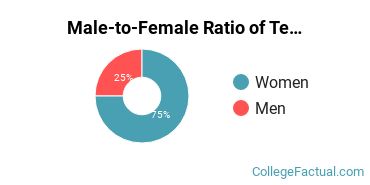 by our College Data Analytics Team
by our College Data Analytics TeamTeaching English as a Second or Foreign Language/ESL Language Instructor is a concentration offered under the teaching English or French major at Concordia University, Nebraska. We’ve gathered data and other essential information about the master’s degree program in teaching English as a second or foreign language, such as diversity of students, how many students graduated in recent times, and more.
You can jump to any section of this page using the links below:
In 2019-2020, the average part-time graduate tuition at Concordia University, Nebraska was $480 per credit hour for both in-state and out-of-state students. The average full-time tuition and fees for graduate students are shown in the table below.
| In State | Out of State | |
|---|---|---|
| Tuition | $8,650 | $8,650 |
If you’re one of the many students who want the flexibility of distance learning courses, you’ll be happy to hear that Concordia University, Nebraska offers online option in its teaching English as a second or foreign language master’s degree program. To see if the school offers distance learning options in other areas, visit the Concordia University, Nebraska Online Learning page.
Women made up around 75.0% of the teaching English as a second or foreign language students who took home a master’s degree in 2019-2020. This is less than the nationwide number of 83.5%.

Of those graduates who received a master’s degree in teaching English as a second or foreign language at Concordia University, Nebraska in 2019-2020, 8.3% were racial-ethnic minorities*. This is lower than the nationwide number of 28%.

| Race/Ethnicity | Number of Students |
|---|---|
| Asian | 0 |
| Black or African American | 1 |
| Hispanic or Latino | 0 |
| Native American or Alaska Native | 0 |
| Native Hawaiian or Pacific Islander | 0 |
| White | 4 |
| International Students | 0 |
| Other Races/Ethnicities | 7 |
*The racial-ethnic minorities count is calculated by taking the total number of students and subtracting white students, international students, and students whose race/ethnicity was unknown. This number is then divided by the total number of students at the school to obtain the racial-ethnic minorities percentage.
More about our data sources and methodologies.